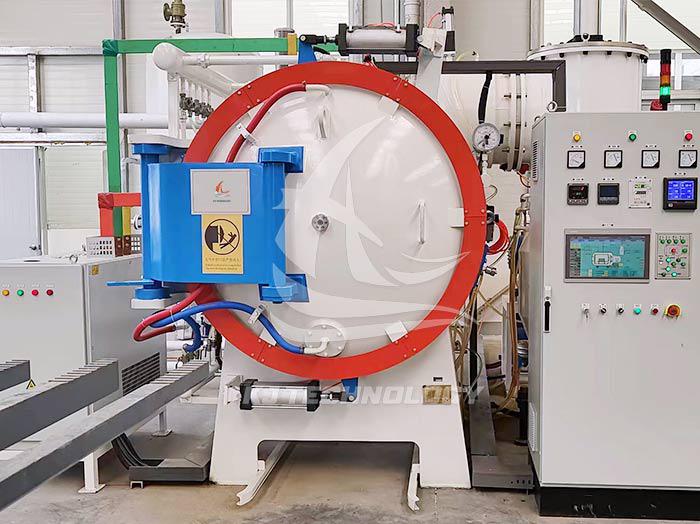High vacuum electric furnace sintering battery materials
 11-04-2025 Author: KJ technology
11-04-2025 Author: KJ technology
A high vacuum electric furnace can sinter battery materials by suppressing oxidation and promoting densification in a vacuum environment, combined with high-temperature heating to achieve high-quality sintering of battery materials (such as positive and negative electrode materials for lithium-ion batteries). The specific instructions are as follows:
1. The principle of sintering battery materials in high vacuum electric furnace
Vacuum environment inhibits oxidation: High vacuum electric furnaces use vacuum pumps to extract gas from the furnace, creating a near vacuum environment that effectively reduces the contact between materials and oxygen during sintering, thereby avoiding oxidation reactions. This is particularly important for battery materials, as oxidation may lead to a decrease in material performance or even failure.
High temperature heating promotes densification: In a vacuum environment, a high vacuum electric furnace heats the materials in the furnace chamber through electric heating elements (such as resistance wires, carbon rods, etc.). As the temperature increases, the powder material begins to bond and diffuse between particles, ultimately forming a dense solid material. This process helps to improve the density and mechanical properties of battery materials.
Atmosphere control optimizes sintering effect: Some high vacuum electric furnaces also have atmosphere control function, which can introduce specific protective atmospheres (such as argon, nitrogen, etc.) to further optimize sintering effect. This is particularly important for certain atmosphere sensitive battery materials.
2. Application examples of high vacuum electric furnace sintering battery materials
Sintering of lithium-ion battery materials: High vacuum electric furnaces have a wide range of applications in the field of lithium-ion batteries. For example, in the preparation of positive electrode materials such as lithium iron phosphate, a high vacuum electric furnace can provide a uniform temperature field and a pure sintering environment, ensuring the high purity and high performance of the material.
Sintering of other battery materials: In addition to lithium-ion battery materials, high vacuum electric furnaces can also be used to sinter other types of battery materials, such as fuel cell materials, solid-state battery materials, etc. These materials also have strict requirements for the sintering environment, and high vacuum electric furnaces can meet their needs.
3. Advantages of sintering battery materials in high vacuum electric furnaces
Improving material purity: Sintering in a vacuum environment can effectively avoid chemical reactions between the material and oxygen or other gases, thereby maintaining the purity of the material. This is particularly important for battery materials, as impurities may have a negative impact on battery performance.
Improving product quality: The uniform temperature field and pure sintering environment provided by high vacuum electric furnaces help ensure the consistency and uniformity of materials during the sintering process, thereby improving product quality and performance.
Energy saving and environmental protection: Due to the small heat loss in a vacuum environment, high vacuum electric furnaces have a high energy utilization rate. Meanwhile, the sintering process reduces gas emissions, which is beneficial for environmental protection.








